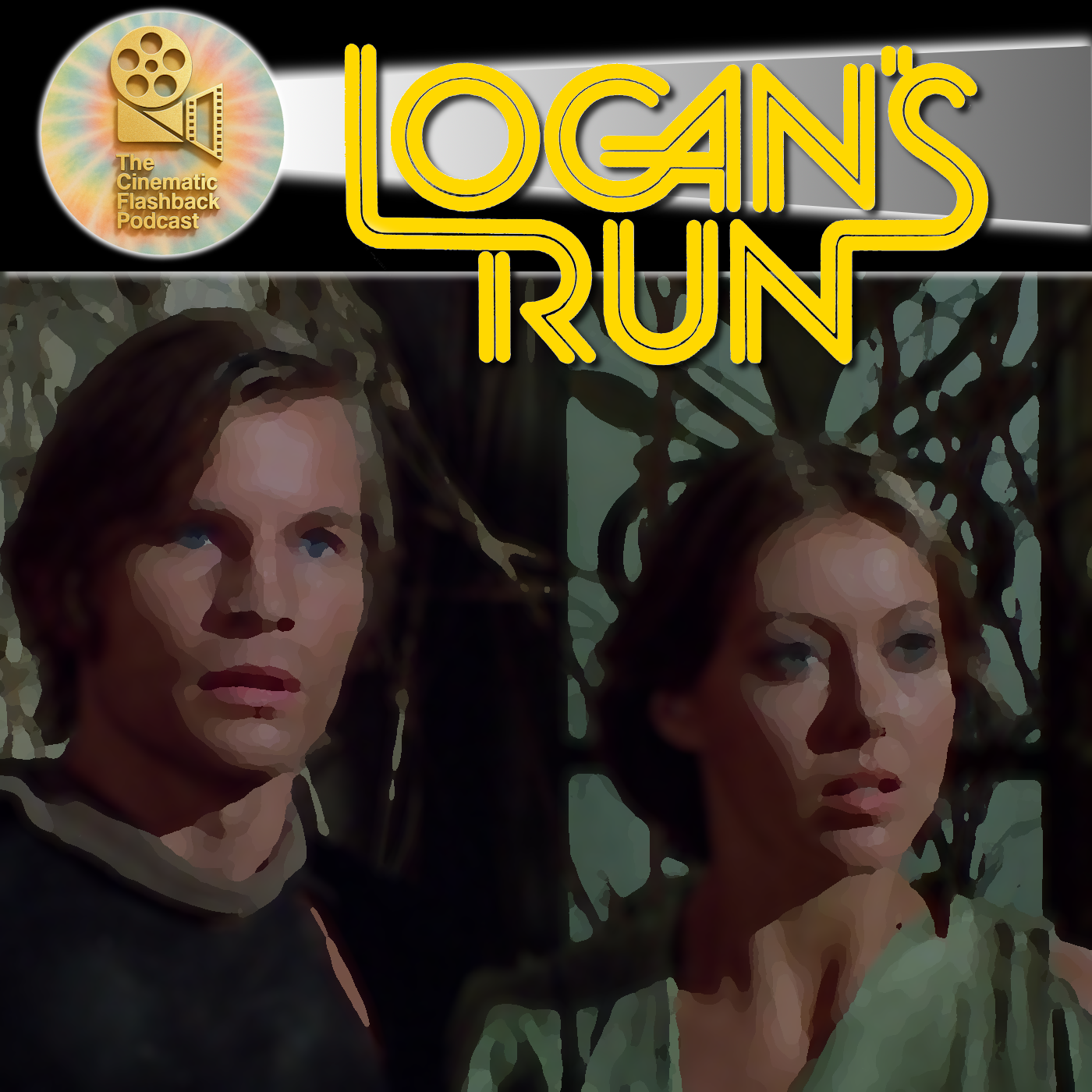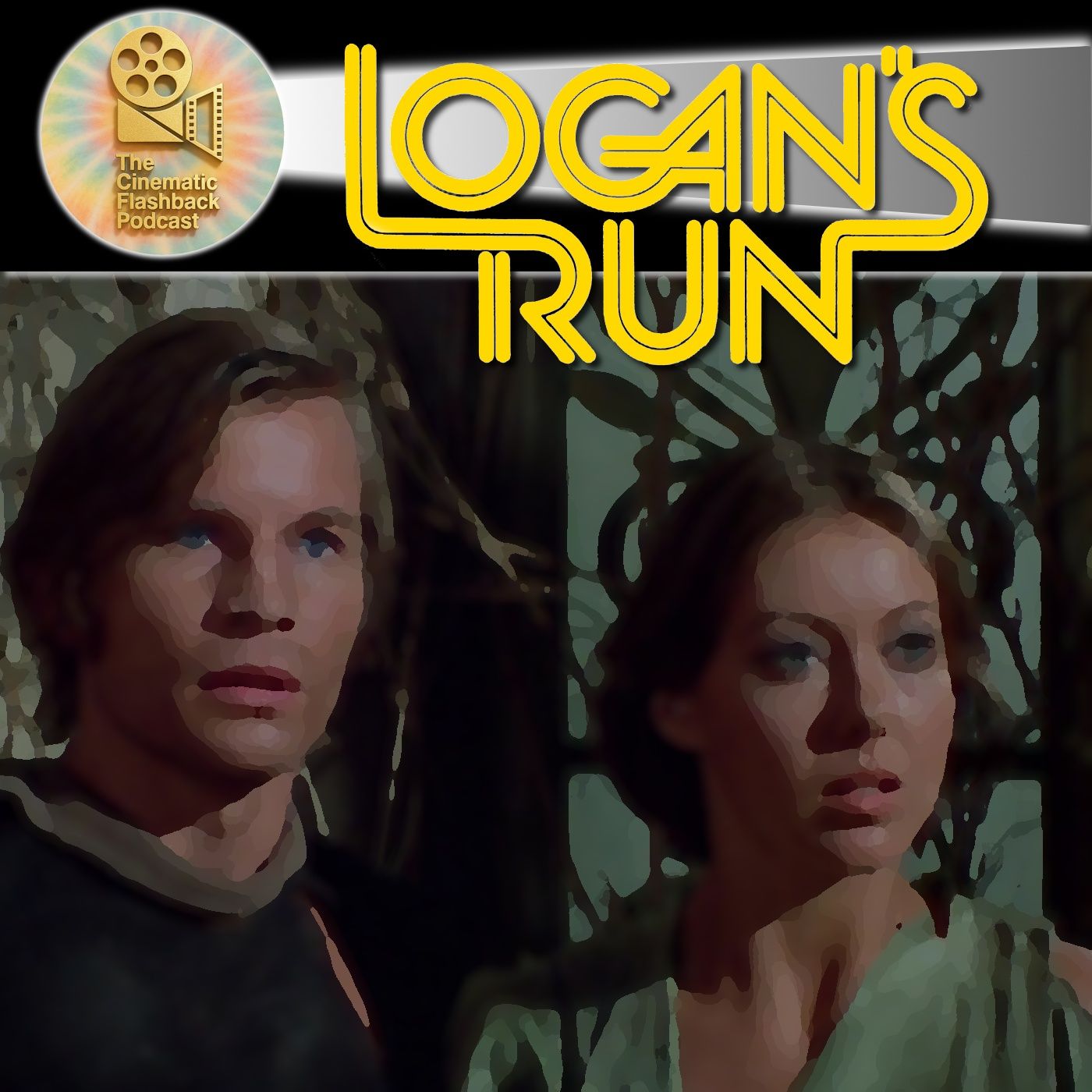Logan’s Run: Pleasure, Renewal, and the Expiration of Freedom

When you step into the Dome City of Logan’s Run (1976), the future looks bright. Citizens live in a climate-controlled paradise, free of work, hunger, and aging. But there’s a catch: on your 30th birthday, you’re sent to Carousel for “renewal.” It’s a society that promises endless youth but delivers ritualized death.
Watching the film nearly fifty years later, Matt and I were struck by how Logan’s Run mixes utopian sheen with dystopian dread. The contrast is part of what makes it such a fascinating time capsule of 70s science fiction.
Utopia or Dystopia?
On the surface, life inside the dome looks like heaven: no jobs, no money, and every appetite satisfied. But beneath the glitter of the Sandmen’s uniforms and the neon-lit clubs, the clock is always ticking. Everyone dies at thirty. There’s no family, no tradition, no old age.
The film forces us to ask: is a life of endless pleasure worth it if it comes with an expiration date? It’s a question that still resonates in our youth-obsessed culture.
Special Effects Before Star Wars
One of the joys of revisiting Logan’s Run is its handmade 70s look. The dome miniatures, the matte paintings, and even the goofy robot Box feel like relics from another era. Only a year later, Star Wars would raise the bar for visual effects so high that Logan’s Run suddenly looked quaint.
Still, there’s something charming about those models. They may not fool our 4K eyes today, but they give the movie a theatrical, almost theme-park feel—like EPCOT reimagined as a dystopia.
Jerry Goldsmith’s Sonic World
The score might be the film’s most underappreciated strength. Jerry Goldsmith draws a sharp line between the sterile, electronic sounds of the dome and the lush orchestral music that swells when Logan and Jessica finally see the sun. It’s an aural reminder that freedom and nature are more human than the glittering machines running the city.
Characters, Camp, and Carousel
Michael York’s Logan has always divided audiences—some find him too stiff, others think he nails the role of a man forced into rebellion. Jenny Agutter brings warmth and vulnerability to Jessica, while Richard Jordan’s Francis embodies blind loyalty to the system.
Then there’s Peter Ustinov, wandering among dozens of cats and quoting T.S. Eliot. He’s the last human living outside the dome, and he brings a strange, whimsical energy to the story. On one level, he represents continuity with the past—someone who remembers poetry, cemeteries, and traditions. On another, he’s a reminder of how fragile that memory is when the rest of humanity has forgotten what “mother” even means on a tombstone.
And about those cats… let’s just say we had questions. The film shows him cracking nuts, sure, but his diet is left suspiciously vague. Given the sheer number of cats swarming around him, we couldn’t help but joke that he might’ve been on a 100% cat diet. Dark? Absolutely. But also one of those oddball details that makes Logan’s Run stick in your head long after the credits roll.
And of course, there’s Box—the mirror-plated robot who “stopped freezing fish and started freezing people.” Campy? Absolutely. Memorable? Without question.
The Real Tragedy Beyond the Dome
Matt raised a chilling point that stuck with me: even if the citizens escape the dome, they don’t know how to survive. They’ve never farmed, never stored food for the winter, never built shelter. They’ve been pampered by machines their entire lives.
So when the walls of the Dome City fall, the real tragedy isn’t just the collapse of an oppressive system. It’s that these people are almost certainly doomed to starve or freeze within a year. Freedom without survival skills is no freedom at all—it’s just a slower death.
Why Logan’s Run Still Matters
Looking back, Logan’s Run feels like a warning about the dangers of trading freedom for comfort. It imagines a society so obsessed with youth and leisure that it literally kills off anyone who ages out. It’s part of the broader wave of 70s dystopias—Soylent Green, Westworld, Zardoz—that asked hard questions about where humanity was heading.
Watching today, Matt and I came away with different verdicts. For Matt, the film still grooves through the decades with its ideas and eerie atmosphere. For me, it lost its beat—too campy, too pre-Star Wars to fully hold up. Maybe that tension is what makes it worth revisiting.
Final Thought
Whether you see it as utopian fantasy or dystopian nightmare, Logan’s Run is more than just 70s kitsch. It’s a reminder that even the most comfortable society has a price—and that survival depends on skills that no machine can replace.



